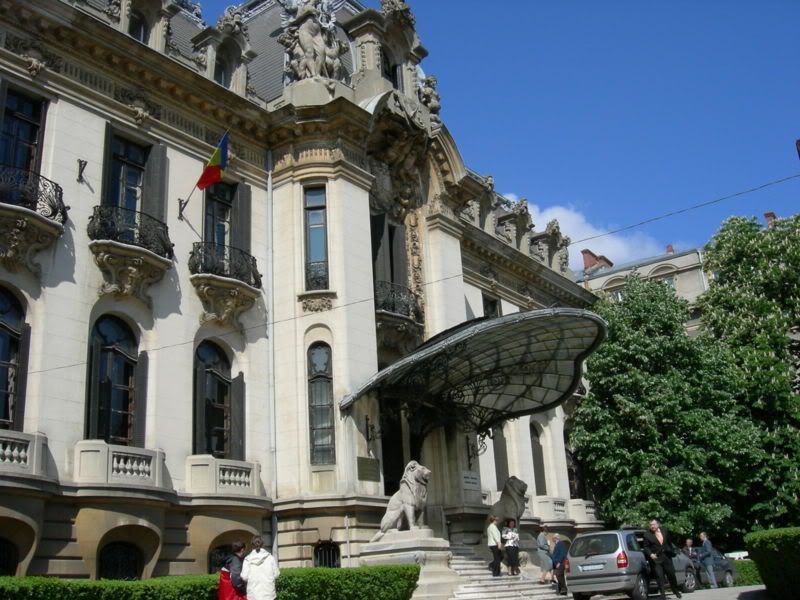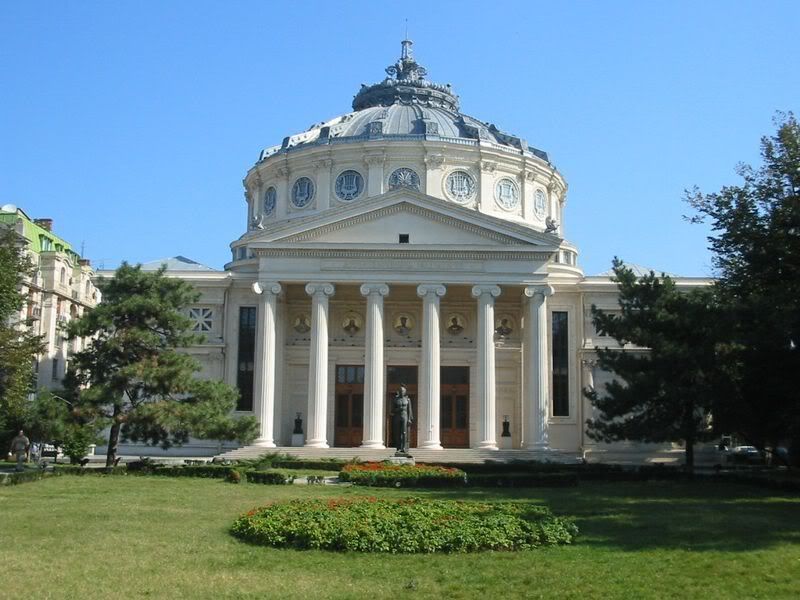The George Enescu Museum
I am just back from Bucharest. It took 20 hours to return home, including an eleven-and-a-half hour flight from Bucharest to New York's Bucharest-like JFK airport, and a three-hour layover at JFK for my connecting flight.
There was only one day for sightseeing in Bucharest following my organization's seminar, and I was unable to take advantage of half of that for reasons I won't waste your time going into here. In general, the old city is decrepit and traffic-clogged; some of the exhausted Stalinist Moderne apartment buildings had washing stretched out on clotheslines to dry, right downtown. Even the perimeter walls around the grounds of the President's Palace, built by the dictator Ceausescu, are crumbling here and there.
Fine buildings from the "Paris of the East" days do remain in considerable numbers, though. Unfortunately, most have not been well maintained, although if they can be saved from falling apart or going under the wrecking ball they may one day considerably brighten up the city. Right now many of the elegant older buildings that have been spiffed up serve as casinos.
The highlights of my afternoon's self-guided tour:
The George Enescu Museum. An extraordinary Art Nouveau/French Beaux Arts mansion, formerly owned by a Romanian royal family. The exhibits are probably of minor interest to most people without a specialist interest in the composer Enescu, but I don't see how anyone could fail to appreciate the house, built just before the good times ended in '14-'18. The main hall includes an allegorical ceiling fresco and unbelievable plasterwork including sculptured figures playing trumpets that jut out from the walls.
Enescu isn't much performed in the United States, but he was an important musical figure in Europe. I'm really just beginning to get to know his music, but have found it to be beautiful and unusual. If you want to check him out, don't stop with the Romanian Rhapsodies, the only pieces that made it into the international standard repertory (and even they seem to have faded).
The Atheneum
The Romanian Atheneum. Bucharest's gloriously restored late 19th-century concert hall, which I toured after an old man who served as guard and guide managed to find someone to watch the door for him. He had no English and I no Romanian, but we found a common language in basic French, which I quickly regretted. Despite his obvious goodwill, I would have preferred silence on his part to absorb the place in peace.
The three Romanian Orthodox churches I visited reminded me of the Greek Orthodox churches I had seen in Athens, and were if anything even more transcendently beautiful. Pass from the porch where candles for the dead smoke in miniature shrines, through the door and inside. The urban world of sound-spitting motorcycles, hip-hop-booming cars, commercialized frenzy dissolves like ghosts at dawn's first breath.
The interiors are dimly lit, their walls covered with paintings, frescoes, and ikons. The ikons of Jesus, his family, and various saints exhibit a technique I can't recall seeing before: most of the picture is low-relief silver, but with cutouts for the faces, which are painted on canvas. Strange, but effective.
The metallic surfaces of ikons and sacramental objects sparkle even in the scant illumination, reminiscent of certain mystics' descriptions of divine experience of paradoxically brilliant darkness. It astonishes me how the very old artistic tradition of such churches, its roots in the Byzantine age of more than a millennium ago, manages to create an atmosphere that may come as close as anything can in the material world to showing us what no eye can see through mortal lens. If any space is holy, this is.
We need holy spaces, natural or man-made, in this life where fortune, love, home, reputation, position, all we crave or hold dear can be won or lost; but God can only be won.




No comments:
Post a Comment